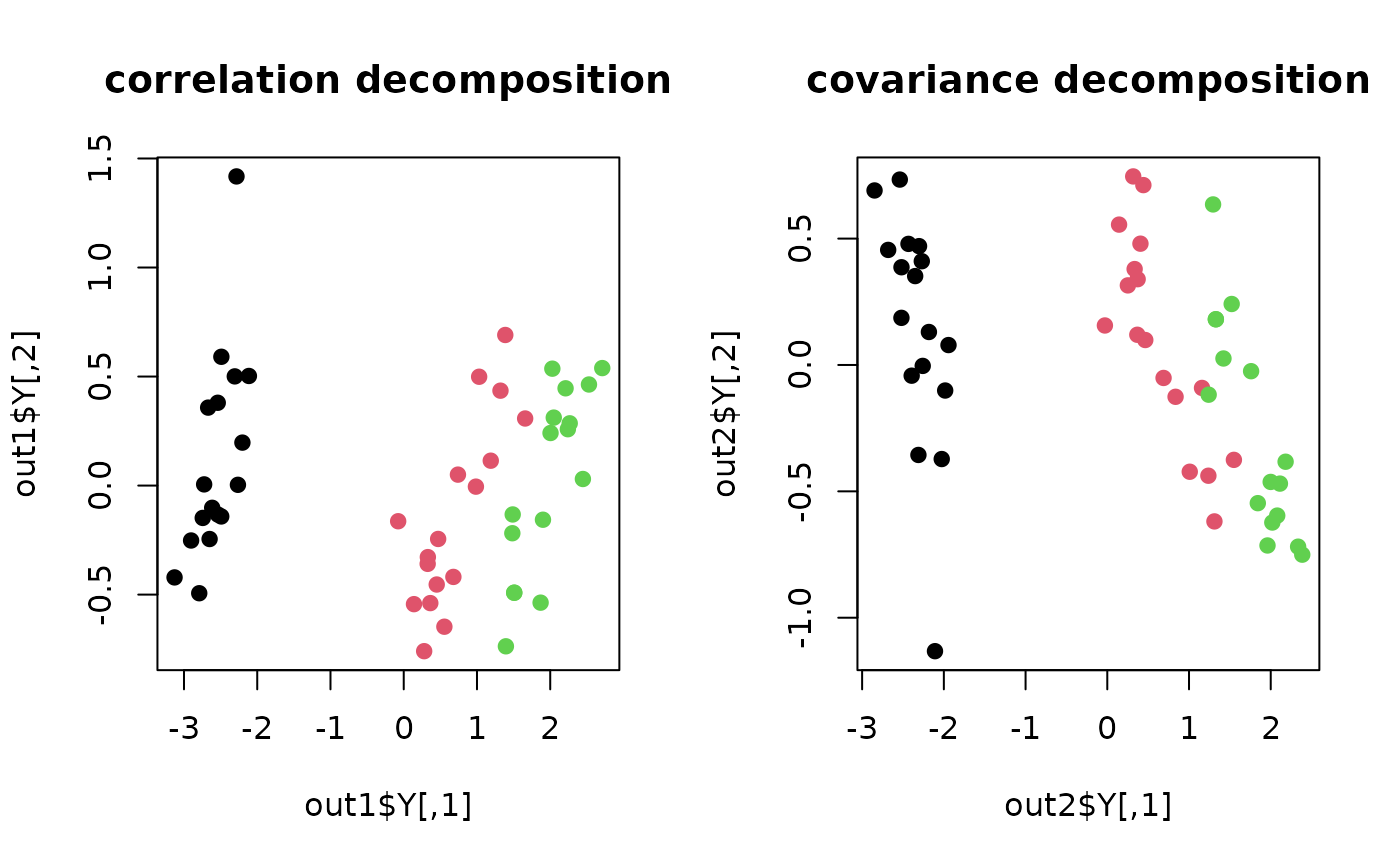do.pca performs a classical principal component analysis (Pearson 1901)
using
RcppArmadillo package for faster and efficient computation.
do.pca(X, ndim = 2, ...)Arguments
- X
an \((n\times p)\) matrix whose rows are observations and columns represent independent variables.
- ndim
an integer-valued target dimension.
- ...
extra parameters including
- cor
mode of eigendecomposition.
FALSEfor decomposing covariance matrix (default), andTRUEfor correlation matrix.- preprocess
an additional option for preprocessing the data. Default is
"center". See alsoaux.preprocessfor more details.
Value
a named Rdimtools S3 object containing
- Y
an \((n\times ndim)\) matrix whose rows are embedded observations.
- vars
a vector containing variances of projected data onto principal components.
- projection
a \((p\times ndim)\) whose columns are basis for projection.
- trfinfo
a list containing information for out-of-sample prediction.
- algorithm
name of the algorithm.
References
Pearson K (1901). “LIII. On Lines and Planes of Closest Fit to Systems of Points in Space.” Philosophical Magazine Series 6, 2(11), 559--572.
Examples
# \donttest{
## use iris data
data(iris)
set.seed(100)
subid = sample(1:150,50)
X = as.matrix(iris[subid,1:4])
lab = as.factor(iris[subid,5])
## try covariance & correlation decomposition
out1 <- do.pca(X, ndim=2, cor=FALSE)
out2 <- do.pca(X, ndim=2, cor=TRUE)
## visualize
opar <- par(no.readonly=TRUE)
par(mfrow=c(1,2))
plot(out1$Y, col=lab, pch=19, main="correlation decomposition")
plot(out2$Y, col=lab, pch=19, main="covariance decomposition")
 par(opar)
# }
par(opar)
# }